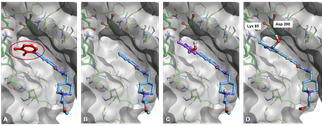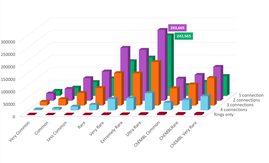March 2024 Newsletter
Welcome to the March Cresset newsletter where we share our latest results for GPCR benchmarks using Flare™ FEP, Cresset wins ...
News
 methods for refined molecule design
methods for refined molecule designGiovanna Tedesco, Head of Products, takes a look at the new features in Spark V10.6, our scaffold hopping and bioisostere replacement tool. This latest release includes a new docking functionality to enable users to find novel results not previously mapped by an existing starter or reference molecule, as well as improved calculation methods and new advanced search options.

Nathan Kidley, Senior Application Scientist, explores the new Spark fragment and reagent databases that have been updated to accompany the release of Spark V10.6. Derived from commercial sources and the literature, these databases are a good source of novel ideas for your drug discovery projects and are now available for download.
Mark Mackey, CSO, reviews a recent paper from academics in South Korea which looks at p300 histone acetyltransferase inhibitors as anti-fibrotics. This demonstrates the power of advanced ligand-based SAR analysis in Forge™, especially on less well-understood targets.
In drug discovery programs, summarizing and understanding the SAR for large sets of compounds can be both challenging and time-consuming. This webinar will focus on using Forge™, Cresset’s workbench for SAR analysis and molecule design. We will show how Activity Miner™ and Activity Atlas™ can give a clear rationale for changes in activity and provide inspiration for how to exploit this knowledge in new design iterations. Topics covered include finding critical regions of activity using activity cliff analysis; understanding the electrostatic and shape changes that cause a difference in activity; generating meaningful summaries of SAR into a visual 3D model to inform molecule design and help prioritize molecules for synthesis. Registration is open.
Molecule design is central to the progression of small molecule discovery projects. All future properties of a molecule are captured at the moment of design and hence it is critical to consider all the information available at the inception of the new idea. Good communication and visibility across a project are needed to prevent wasted resources and duplicated efforts. Without these, a chemist may invest time on a design that has already been attempted and discarded, or chemists working from different locations may even be unknowingly working on the same design. Drug discovery is a dynamic, collaborative process and information sharing shouldn't be reserved for review meetings.
In this webinar you will learn how to use Torx™ Design to sketch molecule designs using customizable plugins, share ideas with others in the project in an information rich environment, and discuss and collaborate in real time using shared sessions. Registration is open.